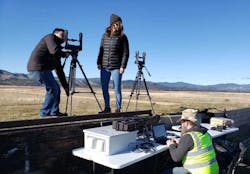The U.S. Army wants to use artificial intelligence (AI) to make decisions and take action on the battlefield
PITTSBURGH – The U.S. Army’s Artificial Intelligence Task Force (AITF) in Pittsburgh is using its technical expertise and proficiency with future technology to work on a project that could transform how the U.S. military prepares for and conducts battlefield operations. The Defense Visual Information Distribution Service reports. Continue reading original article
The Military & Aerospace Electronics take:
7 Feb. 2020 -- It’s called Aided Threat Recognition from Mobile Cooperative and Autonomous Sensors (ATR-MCAS), and it was the project focus for the AITF and Carnegie Mellon University’s National Robotics Engineering Center (CMU NREC) team in Pittsburgh, which participated in a data collection event at Fort Hunter Liggett, Calif. last month.
ATR-MCAS uses artificial intelligence (AI) and a system of networked air and ground vehicles that leverage sensors and edge computing. The vehicles carry sensors enabling them to navigate within areas of interest to identify, classify, and geo-locate entities, obstacles, and potential threats which reduces the cognitive load on soldiers.
The system is also capable of aggregating and distributing the target data, which can then be used to make recommendations and predictions based on the combined threat picture provided.
John Keller, chief editor
Military & Aerospace Electronics
